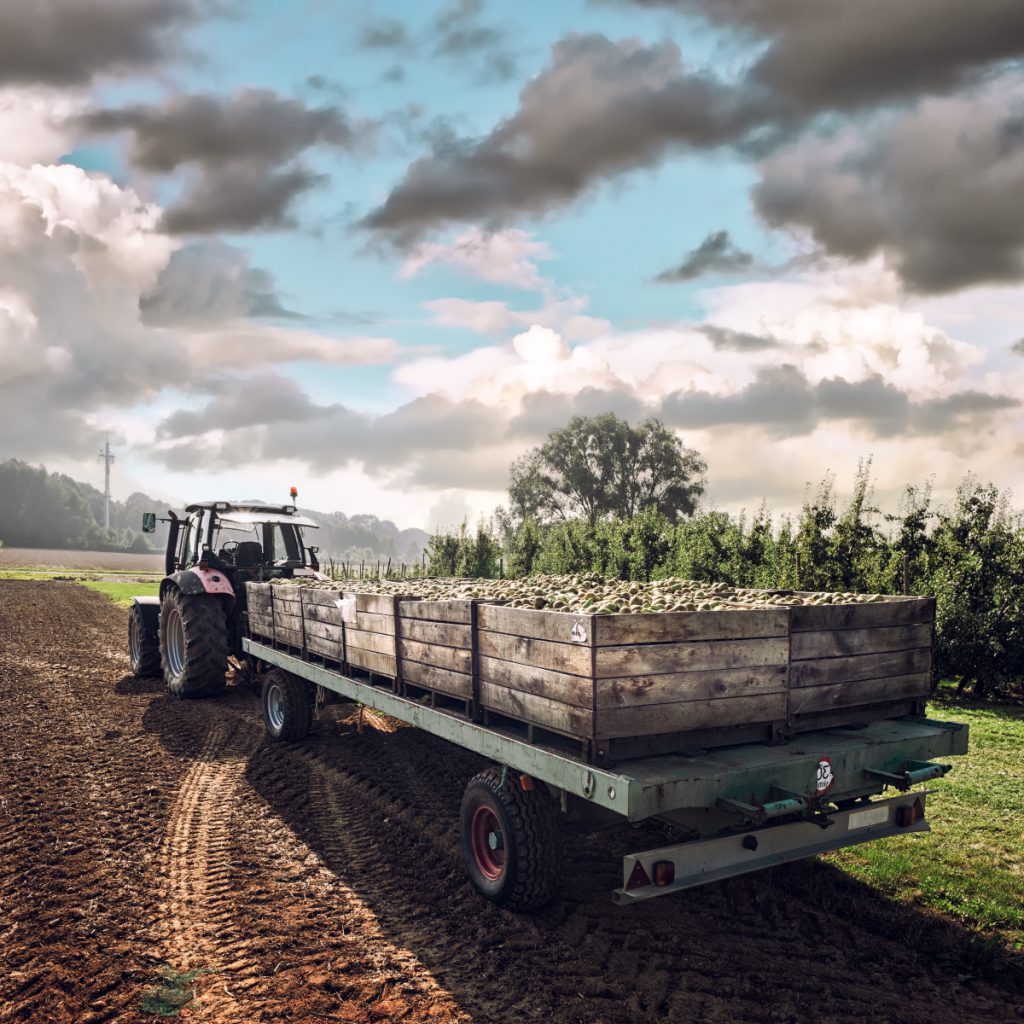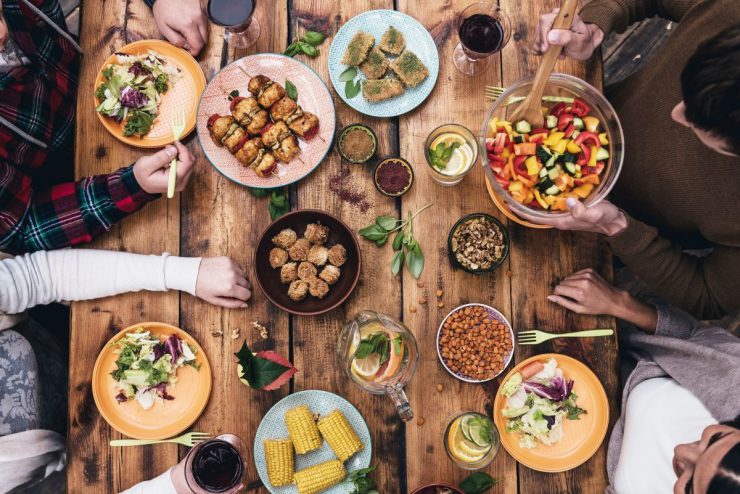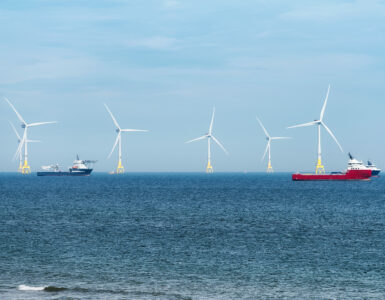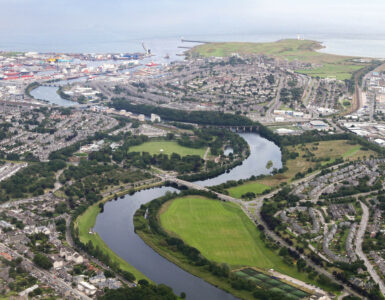You might not often wonder about where the food you eat comes from or how it arrived on your plate. But did you know that 18% of the UK’s primary energy sources go towards the food chain involved in getting your favourite foods to you?
THE FOOD CHAIN
Before you tuck into your next meal, have a look at the ingredients on your plate and think about the incredible journey they’ve been on to become your breakfast, lunch or dinner!
The food production chain infographic below shows the different stages involved ‘from farm to fork’.

Click to open in new tab.
There is a large amount of energy, water and land used throughout this chain, and with that comes carbon emissions and greenhouse gases that the government are looking to cut through efficiency and new technology.
In fact, around 20% of your carbon footprint comes from the food you eat.
Let’s look at each stage in turn and see what we can do to help save energy in each area.
PRODUCTION (GROWING)
Some foods don’t require much energy use during the growing stage; potatoes and veg and other fresh produce generally require water and land. However, some greenhouse-grown products like tomatoes require extra energy through heating.
Farms contribute most of the food we eat, but also to greenhouse gases. From the fertiliser used on the land to the methane that farm animals such as cows give off when they burp and fart!
Natural gas is vital to making the fertilisers farmers use on their land. In 2015, natural gas-based fertilisers were used on 75% of UK farmland.

Fertilisers are needed to help soil keep the nutrients it needs to keep growing healthy crops. They also help them grow faster and larger so the amount of harvest we get from each crop is bigger.
If you’ve heard of organic farming, this is slightly different, where manure is used as a fertiliser, instead of making artificial fertiliser in a lab. It also looks at using different sections of land at different times so that the land has time to get its nutrients back before being used again.
MANUFACTURE
A small number of products are responsible for 80% of carbon emissions: the manufacture of bread and fresh pastry, the production of cheese and other dairy products, the production of meat and poultry and the manufacture of beer and alcoholic beverages.
This is because there are extra processes involved in transforming some crops or livestock into food we can eat or cook.
Wheat, for example, is one of the most common crops which needs to be processed before it’s transported out to shops and restaurants into the form we know it as, including bread, cereal and crisps!
PACKAGING
There is often discussion over the damage packaging waste can cause to our beaches, oceans and elsewhere, due to their inability to biodegrade.
We could look at more efficient ways of packaging food. For example, there are some techniques that are clearly wasteful, such as this peeled orange in a plastic container!

However, packaging is essential. It allows food to travel from farm to fork without being damaged and helps cut down on food waste by preserving food for longer.
Recycling where possible is one way consumers and producers can make sure packaging is being dealt with sustainably, and not polluting the environment when disposed of with normal rubbish.
Find out more about the energy involved in recycling in our debate resource, ‘Save Energy, Waste Energy’.
TRANSPORTING
Getting food from farm to manufacturer to your supermarket or local restaurant requires a lot of transportation and as we know, transport needs oil and gas to get us around.
However, sometimes the food on your plate takes a longer journey than a few hours in a lorry.
Some crops need a certain type of environment to grow, or can only be grown in specific seasons. Cacao beans for example, which give us delicious chocolate, can only be grown in tropical areas around a narrow belt on Earth.
If we have a taste for something that’s out of season in the UK, it’s usually still possible to buy whatever you like in the major supermarkets, thanks to transporting food from all over the world whenever we like. However, this adds to the carbon footprint of some foods.
As we find cleaner alternative methods of fuelling our transport and technology becomes more efficient, the carbon emissions given off by moving food around cities, countries or continents will decrease.
To be even more sustainable in the food chain, we could stick to eating food that is grown locally, and in season. However, this would require a big change in our own behaviour.
RETAIL
Supermarkets and restaurants have a big part to play in the food chain and the energy used along the way.
Fruit, vegetables and other food groups can often go to waste because they aren’t “pretty”. This can happen at all levels of the food chain, from harvest to supermarket to our own plates, but supermarkets have the influence to let consumers know that just because a potato doesn’t look very tasty, it tastes the same as what you would consider a ‘normal’ potato to taste like.

This ensures that all the energy put in getting the crops to grow and transporting them around does not go to waste.
The supermarkets themselves use energy simply storing large amounts of all types of food, with electricity needed for refrigeration and lighting. These two specific uses can be made more sustainable by using low-carbon energy sources where possible and switching to more energy-friendly LED lighting.
CONSUMER
The average household throws away around £470 a year of food that could be eaten but is thrown away instead. This is up to around a third of all food produced being lost or wasted.
Reasons for throwing away food range from them not being used in time so they pass their ‘Best Before’ or ‘Use By’ dates, burning or spoiling food when preparing it, or simply cooking too much!
Whatever the reason for throwing away food, whether it be from our plates, by the supermarkets not selling before they expire, or being thrown away at harvest for the way they look, there are ways we can make use of food waste.
Giving food waste to biomass burners, feed for animals, or to charities means that the energy that went into growing, manufacturing, packaging and transporting food to the end customer is not wasted.












